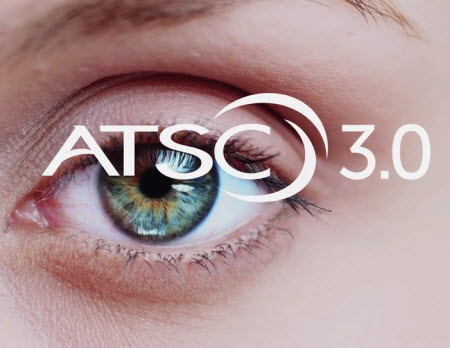Pay TV Ops Take Aim at ATSC 3.0

WASHINGTON — The American Television Alliance has opened up a new front in the battle with broadcasters over retransmission consent — or at least a new skirmish.
ATVA, whose members include cable and satellite operators and some others, has told the Federal Communications Commission not to hand broadcasters the keys to the new ATSC 3.0 advanced TV standard, saying it should put the broadcasters’ proposal out for comment first.
“By endorsing a nationwide change in the way we broadcast television, the FCC would be imposing an unfunded mandate on U.S. consumers, as well as cable and satellite providers, who are required by law to carry local broadcast-TV signals due to ‘must-carry’ or retransmission-consent agreements, regardless of how they’re delivered to them by broadcasters,” the group said.
ATVA gives a lot of reasons for not just endorsing the broadcaster petition without further study, but the one closest to its mission statement is that it could add a new fee to the broadcast retransmission-consent fees cable ops already argue are too high and getting higher.
What does the new interactive-TV standard have to do with retransmission consent? Potentially a lot, ATVA has argued — specifically tied to the new equipment that will be needed to retransmit broadcast signals.
ATVA representatives outlined their concerns in a meeting with FCC officials, including Media Bureau chief Bill Lake, though they will likely have to follow up when a new Trump administration takes over in a few weeks.
Among the ATVA members represented at the meeting were independent-operator trade group the American Cable Association, Charter Communications, AT&T and Dish Network.
The smarter way to stay on top of the multichannel video marketplace. Sign up below.
The National Association of Broadcasters and technology companies have asked the FCC to let TV stations start rolling out the new standard on a voluntary basis in conjunction with the post-incentive auction repack of TV stations, pledging to simulcast while they did so. (The standard is not compatible with current sets.)
They wanted a decision by October, so they would likely argue the FCC has already not moved particularly rapidly.
ATVA members told the FCC that given the many issues involved and potential viewer dislocation, the agency should first issue a notice of inquiry, as it did with the 2009 transition to digital television.
The NAB responded to ATVA in a filing last week.
“Despite ATVA’s handwringing concerning forced carriage of Next Generation TV [ATSC 3.0] signals and the costs MVPDs might be forced to bear to carry such signals, petitioners have stated, again in unmistakably clear terms, that MVPDs will not be forced to carry Next Generation TV signals,” NAB said. “Just as simulcasting of broadcaster signals will protect viewers, so too will it protect those MVPDs that receive signals over the air and elect not to carry Next Generation TV signals. If MVPDs elect to carry Next Generation TV signals, there may be associated costs, but that choice be will theirs. “
ATVA said that what is not voluntary in the incentive auction is that MVPDs may have to pay new, per-subscriber patent royalties to retransmit station signals.
“While it appears that broadcasters may benefit from a blanket license covering their use of this technology, patent holders apparently intend to charge new, and potentially substantial, per-subscriber royalties for ‘subscription- based’ services. No such royalties apply to ATSC 1.0 retransmissions,” ATVA said. “This would mean that, for the first time, every MVPD will be burdened with new royalty payments — separate and apart from retransmission consent fees — for the retransmission of broadcast signals, resulting in even higher prices for consumers.”
In any event, ATVA wants to make sure the government-mandated standard is “reasonable and nondiscriminatory.”
ATVA also raised the issue of leveraging the new standard to increase broadcasters’ negotiating muscle in carriage deals. “Any station group with sufficient leverage to compel carriage of unwanted programming or to raise consumer prices by 40% per year, possesses sufficient leverage to compel carriage of ATSC 3.0 signals as well — either directly or through ‘standalone’ offers that represent an obviously unreasonable alternative (e.g., a choice between carriage of both formats at $1.00 per subscriber and carriage of only ATSC 1.0 at $10 per subscriber,” it said.
While broadcasters want the FCC’s green light, ATVA concludes a flashing yellow is the way to go.
“The commission should ensure that it fully understands the ramifications of these changes before it acts — especially in light of the ongoing work in ATSC itself,” they told Lake and company. “A notice of inquiry represents the best way forward.”
Contributing editor John Eggerton has been an editor and/or writer on media regulation, legislation and policy for over four decades, including covering the FCC, FTC, Congress, the major media trade associations, and the federal courts. In addition to Multichannel News and Broadcasting + Cable, his work has appeared in Radio World, TV Technology, TV Fax, This Week in Consumer Electronics, Variety and the Encyclopedia Britannica.

